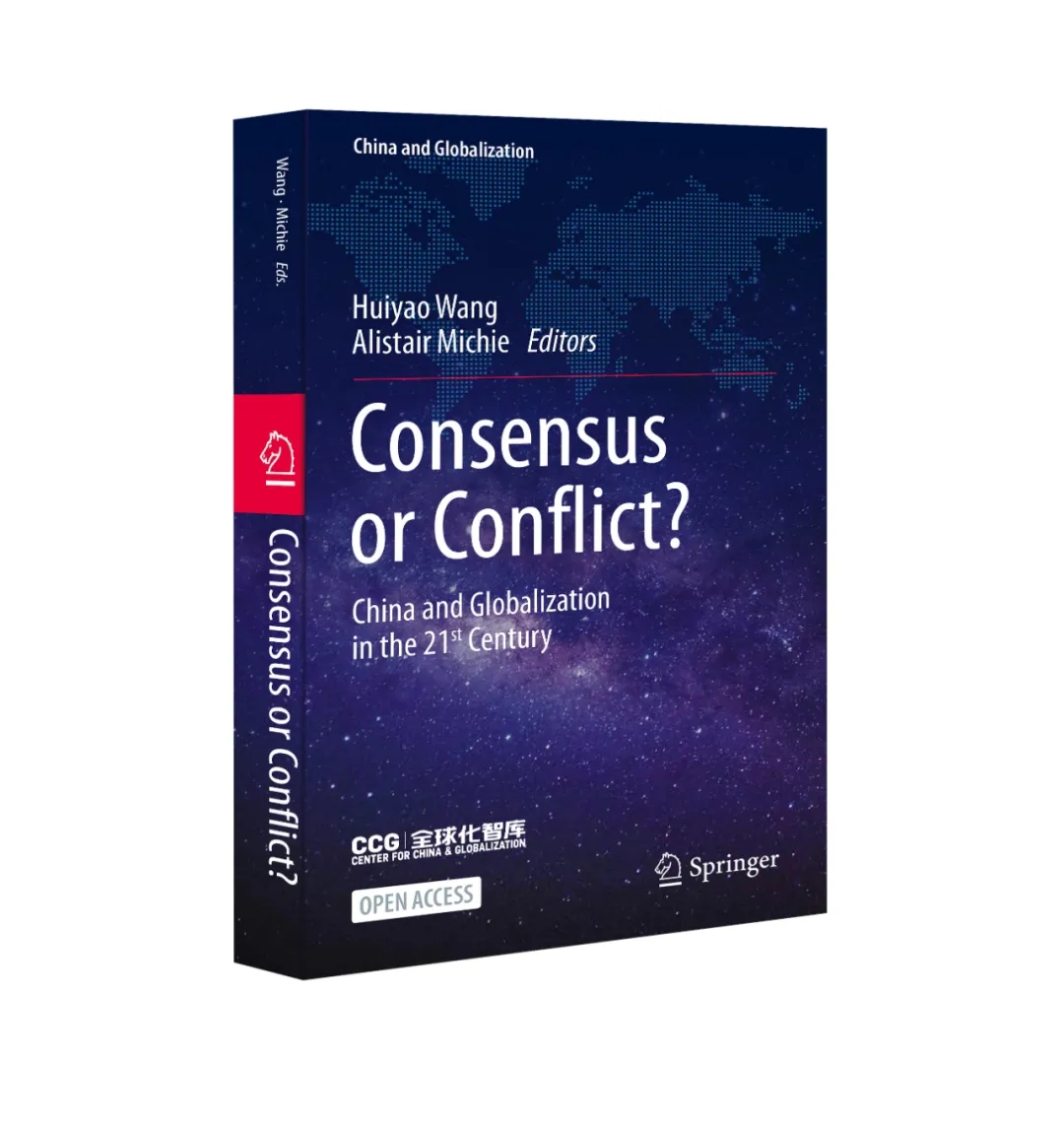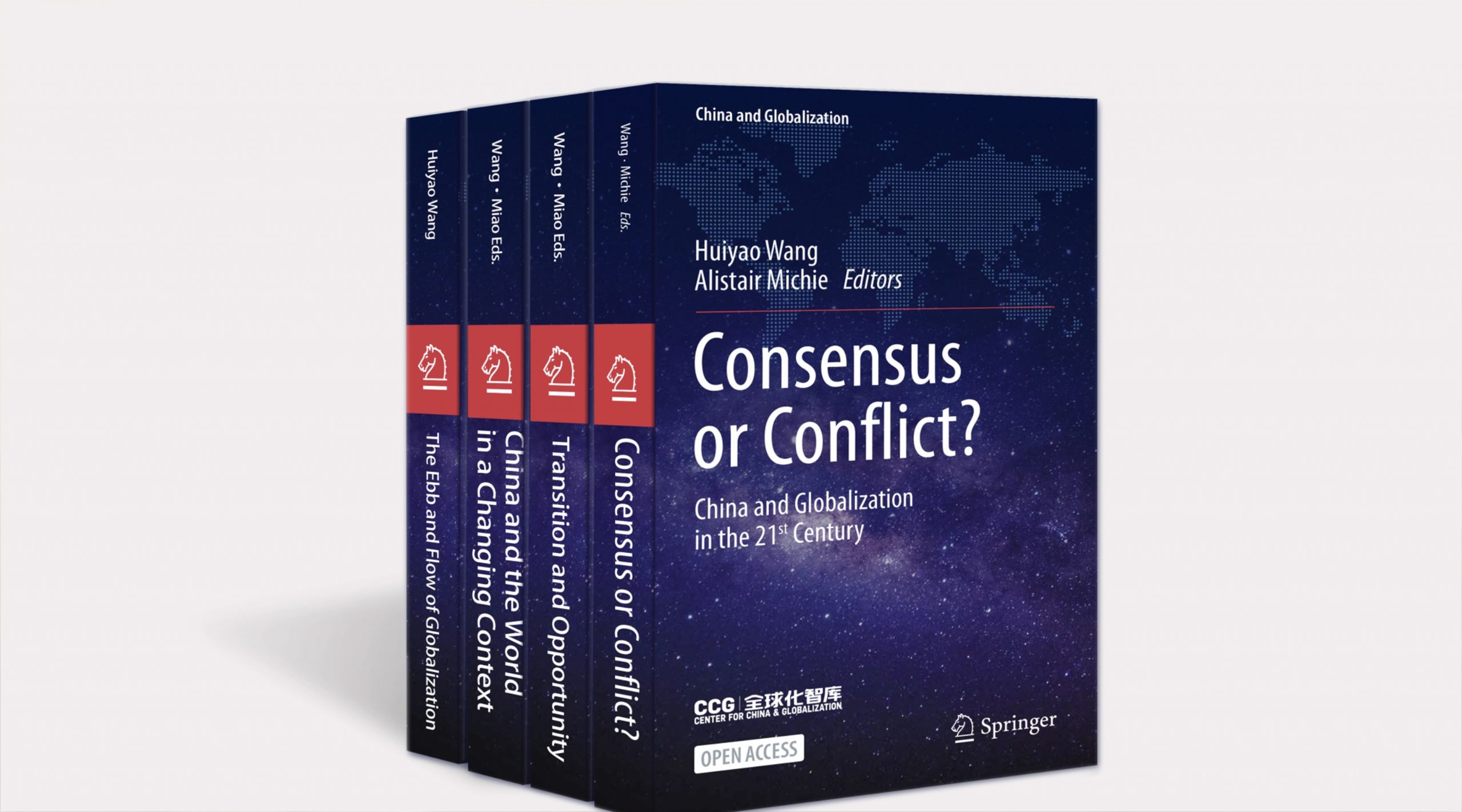Amitav Acharya: COVID & Globalization – Back to the Future or a Brave New World?
Many times, history shows that pandemics kill millions and disrupt economic activity and linkages on a global level. COVID-19 will not be the end of globalization or global governance, but, policymakers seem to develop a convenient case of amnesia about the role of globalization as a transmission belt for a whole variety of threats, such as, pandemics, drug trafficking, people smuggling, money laundering, and environmental degradation. It likely that COVID-19 will further push the world beyond the US-dominated rules-based world order, and usher in a more pluralistic multiplex world. The concept of a multiplex world offers a window into how the emerging world order is likely to take form in the coming decade. This trend toward a multiplex world was already under way well before COVID-19. A multiplex would not be managed or lead by a single power or group, but formed through a G20 plus world where its main players would not be just big powers or nation-states but also institutions, corporations, and networks, operating at multiple and intersecting levels. In such a world order, the nature of threats would be increasingly transnational. These transnational perils would be beyond the ability of any single nation to address and defeat. There is now an opportunity to rethink and reinvent globalization and global governance to fit this new reality.
1. Back to the Future?
Sometime during the late 1320s, a bacterial infection originating in Eurasia spread rapidly through the vast land and maritime trade routes developed by the mighty Mongol empire to the rest of Asia, Europe, and Africa. That pandemic turned out to be bubonic plague (better known as the ‘Black Death’), which reduced the world’s population by over 100 million and disrupted the process of what some call “oriental globalization,” which had reached its peak during the Mongol empire.
After building the largest land empire in world history, the Mongols had linked East Asia, the Middle East and Europe into a vast economic network. They had built roads, bridges, relay stations, and provided security for traders and travelers. At one end of the system was China, the center of the Mongol economic and manufacturing system and the world’s largest economy. On the other end was Western Europe, which was in the early stages of developing its modern capitalist economy, with an extensive regional network linking Italy and Flanders, the Nordic countries and the Baltic in the north with Venice and Genoa, Constantinople, Crimea, Alexandria, and Tunis in the south.
As the Black Death spread, these avenues of commerce rapidly turned into conduits of the pandemic. As Jack Weatherford, the biographer of Mongol Empire founder Genghis Khan, writes, “With luxurious fabrics, exotic flavors and opulent jewels, the caravans brought the fleas that spread the plague from one camp to another, one village to another, one city to another, and one continent to another.” In a crucial blow to the Mongol system, the plague disrupted the interlocking economic relation- ship, known as the Khubi system, between the empire’s four segments, the Yuan in the East (Beijing), the Chagatai Khanate in the center, the Ilkhanate in Southwest (central Asia and Iran), and the Golden Horde in the northwest on Russia’s border. At the same time, European cities closed their borders and turned on the Jews, who as in the past, got blamed for Europe’s latest catastrophe. The Black Death cut China off from Europe for centuries. The extent of human misery and social devastation was such that the Renaissance poet Petrarch would write later, “O happy posterity, who will not experience such abysmal woe and will look upon our testimony as a fable.”
Thanks to advances in medicine and vaccines, the effects of COVID-19 will not be anywhere as horrific as the Black Death. Moreover, it is too soon to make any judgement on the long-term impact of COVID-19 on the future of globalization and world order. But one of the key lessons of the COVID-19 pandemic is how easy it could be for the international community to forget or wish away the dangers of globalization because of the benefits it has unquestionably brought to the world. COVID-19 is not the first pandemic to have killed millions and disrupted economic activity and linkages, and it will surely not be the last.
It has been well known and debated for some time that globalization produces winners and losers in terms of growth and equity. But amid much hubris over its benefits, policymakers have developed a convenient amnesia about the role of globalization as a transmission belt for a whole variety of threats, such as, pandemics, drug trafficking, people smuggling, money laundering, environmental degradation, etc. Looking back, during the SARS pandemic of 2003, I wrote:
Financial volatility, transnational terror and infectious disease represent a new breed of transnational threats that are likely to become a recurring scourge of globalization in the 21st century… Although the three challenges have different causes, they share some common features. First, they tend to materialise suddenly and rather unexpectedly. Second, they reflect the forces of globalization at work. The manner in which they spread and their contagion effects attest to this. Third, the sources of these dangers are not exclusively external or internal to the region. Rather, they emanate from external forces interacting closely with the internal vulnerabilities of states.
I further argued that, “Because they are rooted in globalization, which is an irreversible trend, such perils cannot be defeated permanently. It is more realistic to think in terms of their management, rather than eradication. This reality is going to define a new international hierarchy and order in the twenty-first century.”
The outbreak and effects of COVID-19 not only bear out these remarks but also require us to fundamentally rethink globalization and its related issue of global governance. At the same time, hype about globalization should not be replaced with hype about “deglobalization.”
As the pandemic hit the world, some argued that it would effectively put an end to globalization and that we are perhaps entering into an era of deglobalization. In an op-ed for the Wall Street Journal, published on April 3, 2020, Henry Kissinger wrote, “The contraction unleashed by the coronavirus is, in its speed and global scale, unlike anything ever known in history…The pandemic has prompted an anachronism, a revival of the walled city in an age when prosperity depends on global trade and movement of people.”
My own view was a bit different. In an essay for The National Interest published on April 18, 2020, I argued that while the pandemic was “going to undercut support for globalization, which was already weakened by rising populism and the policies of the Trump presidency,… [it] will not end globalization, but hopefully, it will increase demands for making it more humane and regulated.”
There is no question that in some societies, the COVID-19 pandemic has undercut popular support for globalization, at least in the short term. In people’s minds, the virus’ lightning spread around the world could be blamed on globalization, including tourism and travel. The manner in which countries and even states within countries closed their borders, in a totally unilateral and uncoordinated manner, exposes the myth of a borderless world, and shows the reassertion of national sovereignty, which was supposed to have been tamed by globalization.
But analysts and policymakers should be thinking not about the “end of globalization,” but about how it is changing, or taking on a new form, and how it can be made more just, humane, inclusive, and effective in dealing with perils like COVID-19.
2. Re-inventing Globalization: Silk Roads and “Nirvana Routes”
To understand its present context and future trends, one needs to revisit the history of globalization. Globalization was not invented by the West. Nor is it an exclusively modern phenomenon. Much of the recent debate over globalization associates it with the rise of the West and Western modernity. This is essentially the Davos (World Economic Forum) view, which holds that “true globalization,” or the “first wave of globalization” started only in the nineteenth century.
To be sure, European voyages from the late fourteenth century, the Industrial Revolution in Europe, and lest we forget, European imperialism, linked the Western hemisphere with the rest of the world in a way that had not been done before. But the origins of the overland Silk Roads date back to the second century BCE. More- over, the Indian Ocean trading network, which is now referred to as the Maritime Silk Roads, carried far greater volumes of trade while also remaining open to all, without monopolies or encumbrances of the kind the Europeans introduced after fifteenth century CE. Then there was the Mongol empire’s short-lived but efficient Eurasian trade and transport system. All these networks left enduring legacies, including exchanges of goods, technologies, and ideas (from paper and printing to gunpowder and compasses). In addition, they were governed by principles and customs (such as free and open trade in the Indian Ocean before European arrival), that not only fueled globalization but also contributed to the rise of the West.
Hence, globalization did not begin after 1500 CE, but at least a thousand years before that. As John M. Hobson argues, “after 500 [AD] Persians, Arabs, Africans, Javanese, Jews, Indians and Chinese created and maintained a global economy down to about 1800.” This globalization was characterized by a relatively stable environment, low transit taxes, and rational economic institutions to support trade. This globalization was multi-civilizational, featuring Byzantium, the Tang, Song, Yuan and Ming in China, the Islamic empires of the Abbasids, Umayyads and Fatimids, and south Indian Hindu kingdoms (such as Chola and Vijayanagar) and the Islamic Moghuls in India. It was carried by both land and sea trade. More important, “[t]he limits to the effective authority of the state, combined with the powerful presence of universal belief systems, notably Hinduism, Buddhism, Islam and Christianity, encouraged the movement of ideas, and with them people and goods, across regions and continents.”
Together, the two Silk Roads, overland and maritime, created commercial, cultural, and political linkages and frameworks across Asia. They became what I have called “the Nirvana Routes,” through which the transmission of two of the world’s oldest major religions, Buddhism and Hinduism, spread among the societies of India, Southeast Asia, Central Asia, China, Korea and Japan, with Islam joining later.
Just because the political systems and institutions supporting this globalization were empires, rather than modern nation-states, does not make it less significant as a foundation for modern globalization and world order. On the contrary, the core feature of this classical globalization was its combination of political and cultural diversity on the one hand, and economic inter-connectedness on the other. This is the first known example of a “Multiplex World Order,” and offers a window to how the emerging world order is likely to shape up.
Moreover, it is very important to keep in mind that globalization was already changing before COVID-19, and before the Donald Trump presidency. Trump gave globalization a further push downhill, but he did not cause the slowdown of, and the poplar backlash against, neo-liberal globalization. Instead he exploited and benefited from it to get elected.
Globalization was always hyped, especially by elites around the world, led by vocal and influential champions like the WEF in Davos. The Davos Man’s (to use Samuel Huntington’s phrase) view of globalization always seemed, to me as well as to many other scholars and activists, as unrealistic, unjust and thus unsustainable. Now ironically, many of the same advocates of globalization are talking about its crisis and reversal. They should have raised the flag much earlier.
There have been demands for “deglobalization” before, especially after the financial shocks of 1997 and 2008, and there are now terms going around that look for “re-globalization,” or globalization “2.0”, “4.0,” etc. But the future of globalization would not be a return to pre-COVID-19 normalcy or “business-as-usual.” The past will matter, especially a deeper past, which should make us think about the pluralistic and Eastern-led globalization before the rise of the West. But the future is likely to be a brave new world.
3. A Brave New World?
Even before Trump’s anti-globalization policies had time to take effect and before COVID-19 hit the world, trends in the future direction of globalization could be anticipated based on available indicators. I summarized those trends in the following words:
It is wrong to say that globalization is over. Instead it will, and is already taking, a different form. Globalization may become less driven by trade and more by developmental concerns. This might give more space to the initiatives of the emerging powers, which focus more on infrastructure than on free trade. The new globalization could thus well be led less by the West and more by the East, especially China and India, as it had been for a thousand years before European colonialism…Moreover, the new globalization will be anchored more by South-South, rather than North-South linkages….Due to the prominence of China and other emerging powers, the new globalization might be more respectful of sovereignty. It will be more economic and less political or ideological. It could even be less coercive, especially compared to the Western-led globalization during the 19th and 20th centuries.
The above assessment was based on trends that had been apparent for some time. A report by the United Nations Development Program (UNDP) in 2013 had estimated that the Global South had increased its share of the global GDP from one-third in 1990 to about half and increased its share of world merchandise trade from 25% in 1980 to 47% in 2010. And South–South trade increased from less than 8% of world merchandise trade in 1980 to over 26% in 2011. According to UNCTAD, South–South flows in foreign direct investment now constitute over a third of global flows. These trends were already reshaping globalization.
These trends, which I would simply call “New Dynamic of Globalization” (NDG), are now becoming visible as the world recovers from the economic effects of the COVID-19 pandemic. To be sure, the economic impact of the pandemic is still unfolding and it is too early to make any definitive assessments about its long- term economic impact. But there are some revealing early signs. The International Monetary Fund (IMF)’s October 2020 report showed that in 2021, Asia might grow at 6.9% in 2021 compared to 5.2% for the world as a whole. The UN Conference on Trade and Development (UNCTAD) estimated that by the end of 2020, a recovery from the global trade slump had begun, and it “was largely driven by the trade of goods from and to developing countries, especially by the very strong performance of East Asian economies.”
That Asia’s economic recovery has been faster than that of the rest of the world should not be surprising since the region had good economic fundamentals, but it is possibly even more so due to the fact that Asia as a whole has done a better job in controlling the pandemic than other regions and the West.
When the fourteenth-century plague crippled the Mongol world order, it created the basis for a new world order. In the east the Ming rose, the first major Han Chinese Empire since the Tang Dynasty (the Song was a cultural and scientific giant, but not a military one). Central Eurasia saw the rise of the Ottomans. One branch of the Turko-Mongol elite founded the Moghul empire in India. And ultimately, the Black Death might have even contributed to the rise of Western Europe by reducing population and the Mongol threat, thus paving the way for new economic activity.
Just as the fourteenth-century plague contributed to the rise of Europe, it may well be that COVID-19 will hasten the rise of Asia, which was already under way for some time. The pandemic has also rendered Asia-led globalization more likely than ever before.
There is no question that the role of the US and China will be critical in shaping the future of globalization. Before the pandemic, the US under the Trump administration had already expressed its distaste for globalization and taken numerous steps, such as pulling out of the Trans-Pacific Partnership (TPP) and replacing the North American Free Trade Agreement (NAFTA). COVID-19 was seen by the Trump administration as a vindication of its anti-globalization ideology and strategy. As Peter Navarro, Trump’s lead economic adviser, put it: “if there’s any vindication of the President’s buy American to secure borders and a strong manufacturing base philosophy, strategy and belief it is this [pandemic] crisis.” Trump himself denounced supply chains, the critical element of current globalization. As he put it, “somebody, years ago, got this crazy idea: Let’s build all over the place and let’s have parts—let’s have a screw for a car delivered and made in a country that’s far away, and let’s have a fender made someplace else, and let’s do this, and let’s do that, and let’s put it all together.”
Upon becoming the US President, Joe Biden has promised to restore elements of the liberal international order, reviving alliances, reengaging with multilateral institutions, and promoting human rights and democracy in the world. The Biden admin- istration’s “Interim National Security Strategic Guidance” would like the US to “lead and sustain a stable and open international system…strong democratic alliances, partnerships, multilateral institutions, and rules.” But it does not talk about reviving globalization since that would depend on the strength of the US economy, which remains highly fragile and uncertain. Instead, the Biden administration seeks the return of a world where the US provides leadership and sets the agenda. While Biden’s shift from Trump’s populist and transactionalist approach, and his quick and humane approach to COVID-19 are welcome and deserve praise from the inter- national community, one should also realize that his goal of reviving US global leadership would not be easy to achieve thanks to the combination of toxic politics at home, with Trumpism still very much alive, and competition abroad.
What about China? China will persist with globalization, as clearly affirmed by President Xi Jinping in his Davos speeches of January 2017 and January 2021 (the latter was delivered virtually). China is seeking new opportunities for itself in leading globalization, especially in areas where it has particular strengths—like infrastructure development—which is a vital ingredient of this new globalization.
Even before COVID-19, China had pledged strong support for free trade and globalization. It has been the force behind institutions that support the new globalization dynamic, like the Belt and Road Initiative (BRI), the Asian Infrastructure Investment Bank (AIIB), and the institutions of BRICS countries (Brazil, Russia, India, China, and South Africa), such as the New Development Bank (NDB), and the Contingent Reserve Arrangement (CRA).
But China also faces daunting challenges in providing leadership in this new globalization dynamic. China is steadily overtaking the US in terms of overall GDP output. But leadership in globalization requires more than material power, or technological and financial resources. It also requires international legitimacy or trustworthiness. Global leadership is very difficult to realize without strong support from within one’s own neighborhood in East and Southeast Asia.
4. Toward Humane Globalization
While globalization is not ending, in its new form the world should worry more about how to make it more just and humane than how to make it more efficient. This is critical to the future of globalization.
To ensure popular support for globalization, the international community must ensure that it attracts more stakeholders. This means ensuring that the benefits of globalization are more equitable or at least mitigate the inequalities caused by neo- liberal globalization. This means accepting a role for different leaders and various constituencies, instead of having it led by a single nation (be it the US or China) or a bloc (the West).
This is in keeping with the reality of an increasingly Multiplex World. A Multiplex World order is a world without a hegemon. It is culturally and politically diverse yet connected by economic and other transnational linkages. And in such a world, the makers and breakers of order are not just great powers and states but also non- state actors—corporations, social movements, and extremists—interacting at global, regional, and sub-national levels. Last but not the least, challenges to the world order, peace and stability, come from transnational forces, such as climate change, terrorism, and pandemics.
While COVID-19 may see a greater push for national self-reliance, the logic of a Multiplex World and the dangers of globalization dictate that any effective international response system to transnational challenges like COVID-19 must be based on two realities:
First, exclusionary and inward-looking responses will not work. No region [or nation] can afford to be an island. Second, old attitudes towards sovereignty and non-interference must change. Currency speculators, terrorists and viruses have scant regard for national boundaries. Hence, the old framework of the nation-state is inadequate for responding to transnational perils. Collective action to combat the dangers should be seen not as an abrogation of sovereignty, but rather the pooling of it.
This principle applies as much to the current situation as it did in 2003, when these words were written, and as much to China as to the US, and indeed to the international community at large.
Moreover, the global pandemic calls for a wider and normative view of globalization, not the narrow economistic view. As the late Canadian scholar and my former colleague at York University in Toronto, once wrote, globalization was and will be, “multidimensional: connectedness in politics and the organisation of security, in economics and welfare, in culture, in ecology, in values of all kinds. No area of human activity is isolated; and within each area, no one is untouched by the condition and activities of others.”
The key to generating popular support for globalization lies in addressing the human costs of the pandemic in terms of deaths, impoverishment, and inequality.
While the exact numbers will take time to unravel, they are already horrendously high, and should be front and center in any attempt to revive globalization. Hence, the foremost challenge for the international community is to make globalization more humane.
To this end, in order to make globalization more just and humane, as well as more effective in addressing repeats of dangers such as the COVID-19 pandemic, the West should listen to the voices of the Rest.
The idea of “Humane Globalization,” requires a shift of focus from national to human security. Contemporary globalization, from the rise of the European balance of power order through to the post-World War II period, has been associated with the concept of national security, meaning protecting sovereignty and territory from external military attack. Human security implies security for the human person, for the individual and for the people. To quote the late Pakistani economist Mahbub ul Haq, who pioneered the ideas of human development and human security in partnership with Indian Nobel Laureate Amartya Sen, “We need to fashion a new concept of human security that is reflected in the lives of our people, not in the weapons of our country.”
The ideas of human security and human development suggest that while the tradi- tional understanding of globalization remains obsessed with “power-shift,” measured in terms of GDP growth, military and technological power, but an equally visible and ultimately more important trend in world politics is the “idea-shift.”
Hence, in remaking globalization, one must not assume the superiority of ideas, norms and institutions of the West. Existing commentaries on globalization and global governance show an abundance of narratives in which the “good” norms and effective institutions of governance, development, security, and justice are supposed have been pioneered in the West. These then are supposed to prevail over the “bad” ideas and inadequate institutions of governance in the non-Western world.
COVID-19 has turned this assumption upside down. The fact that the United States, the world’s strongest nation in terms of economic (as yet), military and “soft” power, has also suffered from the highest infection and mortality rate in the entire world, that too by a huge margin, cannot simply be blamed on Trump’s poor lead- ership. But more structurally blame should be directed also on a weak public health system, racial inequality, and a political system led by what Fareed Zakaria, using Alexander Hamilton’s words, calls “government ill-executed.”
The pandemic has shown that coping with global challenges depends more on governance, rather than ideology. While “pundits will debate whether national
responses to the crisis put democracies in a more positive light over authoritarian states,” it is clear that countries and territories “that have offered reasonably strong responses to the coronavirus include both. The real contest here is about governance, rather than ideology or regime type.”
The historian Niall Ferguson has argued that emerging powers such as China and India could not have achieved progress except by “downloading” the ideas and institutions of the West. He calls these “killer apps,” and mentions six: competi- tion, science, medicine, property rights, consumer society, and work ethic. My response, made during a debate with Ferguson in March 2017 at Tsinghua University’s Schwarzman College, was not only that the West could not have developed these “killer apps,” especially science and medicine, without drawing upon the prior advances of the civilizations of the East, China, India and the Islamic world among them. I also argued that the East, now revived, is also “uploading” its own “apps,” or ideas and institutions, for the benefit of all humankind, including the West.
Some of the ideas the West should learn from, or “download” are precisely those of human security and human development, although one could think of many more, such as responsible sovereignty, sustainable development and now, humane globalization. Aside from new advances in science and technology, manufacturing, and medicine, especially in China and India, many ideas about peace, humanitarianism, and political pluralism have roots in the non-Western world, including in Hindu, Buddhist, Confucian, and Muslim traditions and writings. It is understandable why the West wants to propagate its “own” ideas and norms to the rest of the world. What is more problematic and increasingly indefensible, is its claim that anything that does not conform to the Western model of governance is not good enough and ought to be rejected.
5. Conclusion
To conclude, COVID-19 does not spell the end to either globalization or to global governance. It is more likely that COVID-19 will push the world further beyond the US-dominated world order and usher in a more pluralistic Multiplex World, which was already under way well before COVID-19. It would be culturally and politically diverse, but functionally interconnected. Such a world would not be managed or led by a single power or group, but would be a G-Plus world, with its main players not limited to big powers or nation-states, but also including institutions, corporations, and networks, operating at multiple and intersecting levels. Threats to such a world order would be increasingly transnational in nature and beyond the ability of any single nation to address and defeat.
There is now an opportunity to rethink and reinvent globalization and global governance to fit this new reality. Such an effort should aim for developing greater equity, justice, and collective capacity for providing pubic goods, rather than depending on a single nation or a handful of nations.
Amitav Acharyais the UNESCO Chair in Transnational Challenges and Governance and Distinguished Professor at the School of International Service, American University, Washington, DC. Previously he taught at York University, Toronto, University of Bristol, and Nanyang Technological University, Singapore. He also held the inaugural Boeing Company Chair in International Relations at the Schwarzman Scholars Program at Tsinghua University in 2016–2018 and was elected to the Christensen Fellowship at Oxford. His recent books include The Making of Global International Relations (2019); Constructing Global Order (2018); The End of American World Order (2018). He is a two-time recipient of International Studies Association’s Distinguished Scholar Award.

[Book Introduction Video]
Download Book at Springer
https://link.springer.com/book/10.1007/978-981-16-5391-9
Browser, Download & Buy Book at Amazon.com:
https://www.amazon.com






